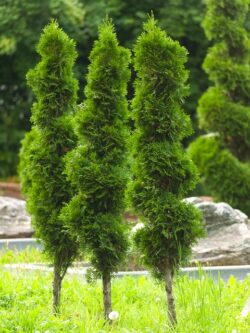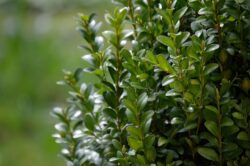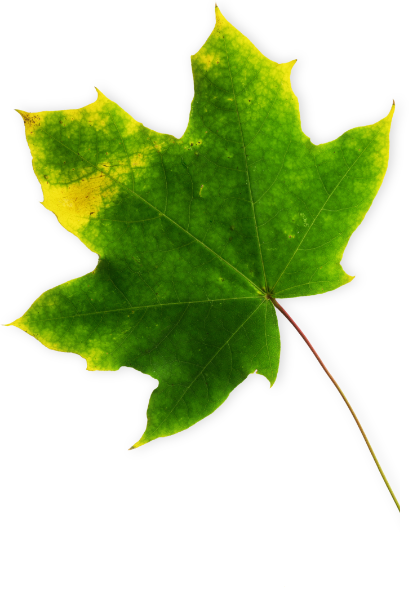Evergreen shrubs can turn brown for a variety of reasons, leaving homeowners wondering what went wrong. In this blog, we’ll explore four common problems of browning in evergreen shrubs. For clarity, evergreens include azalea, boxwood, holly, rhododendrons, arborvitae, cedar, and juniper to name a few.
 Seasonal Color Change
Seasonal Color Change
It is natural for evergreen trees to yellow and brown toward the interior of the tree in the fall. Unlike deciduous trees, such as maples and oaks which will drop all of their leaves in the fall, evergreen trees will hold on to several years’ worth of growth and only lose the oldest leaves. As the tree grows and the interior growth becomes more shaded, the old leaves are shed which is not an indication that there is something wrong. The amount of loss in the fall can vary from year to year depending on how the tree has grown over the past few years.
Winter Burn
Winter burn occurs when evergreen shrubs lose too much moisture during the winter months, causing the foliage to turn brown. This can happen when the ground is frozen and the plant is unable to absorb water, or when there are strong, cold winds that dry out the leaves. Keeping evergreen trees and shrubs well-watered through the fall particularly for newer plants is critical.
An antitranspirant application can also be helpful by reducing moisture loss through the leaves, especially during winter months or dry spells. Antitranspirants are sprays applied to the leaves to block the pores that moisture can escape from sealing the leaf surface. We can apply this treatment to vulnerable plants to help reduce the chances of winter burn injury. Please contact our office if you are interested in this treatment.
Root Damage
Root damage is another common cause of browning in evergreen shrubs. This can occur when the roots are disturbed during planting, when the plant is exposed to too much water or too little, or when the plant is placed in soil that doesn’t drain well. Browning from root damage is often very sudden and there is not much that can be done once this has occurred. Careful planning when planting new trees in places where they can thrive is the first step to help prevent root injury. To help prevent browning in evergreen shrubs, it’s important to ensure they are planted in the right location and in well-draining soil.
 Fungal Diseases
Fungal Diseases
Fungal diseases can also cause evergreen shrubs to turn brown. Fungal diseases need moisture in order to infect. Wet weather like we have had this year leads to more infection. Factors, including poor soil conditions, overwatering, and overcrowding can also help lead to infection. Trees that are prone to fungal infections can be treated regularly with fungicides to help manage infections and reduce spread.
At Natural Tree and Lawn Care, our trained technicians can diagnose the cause of brown evergreen shrubs and provide solutions to promote plant health. Contact us today to learn more about our plant healthcare services and how we can help you maintain a healthy and vibrant landscape.
